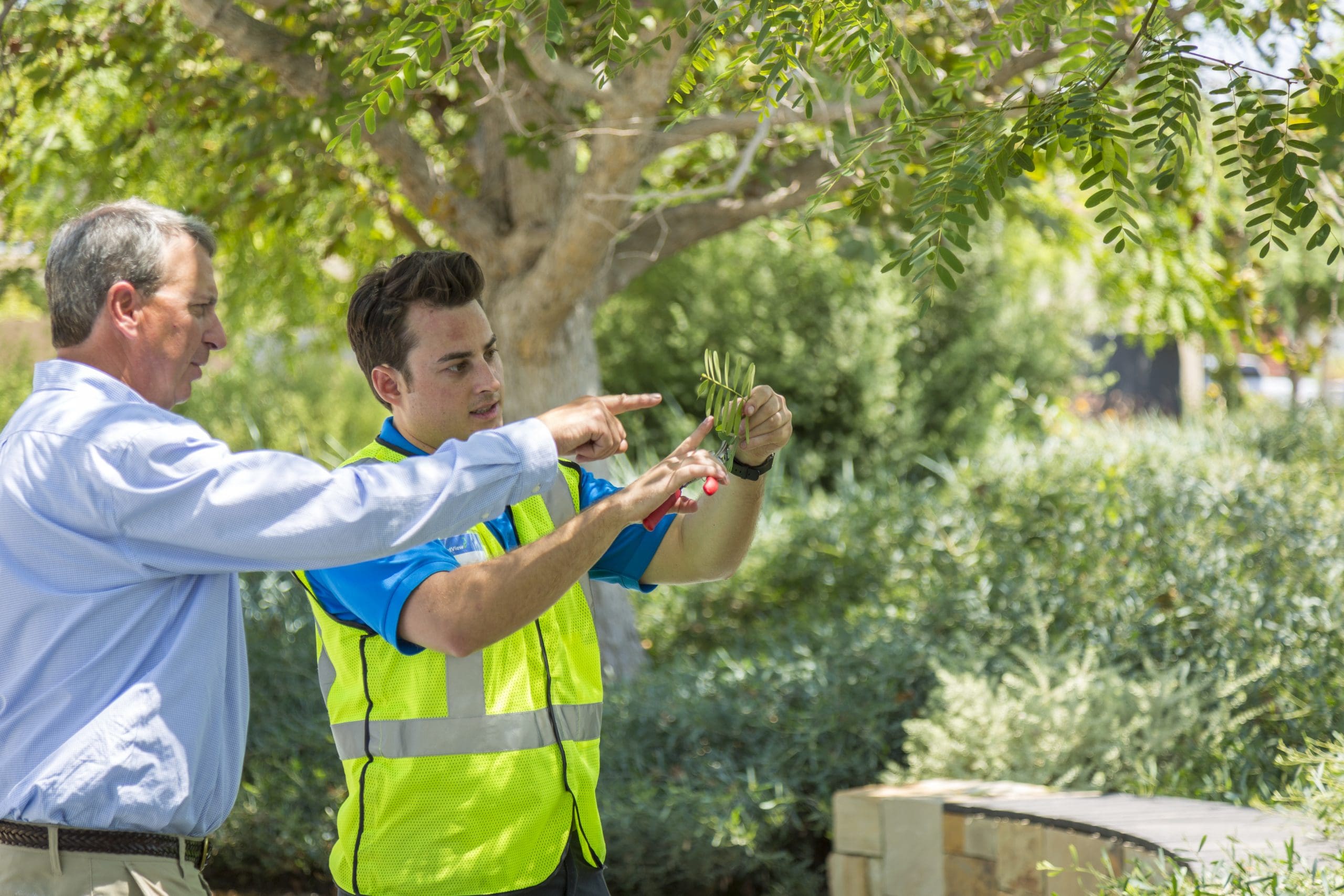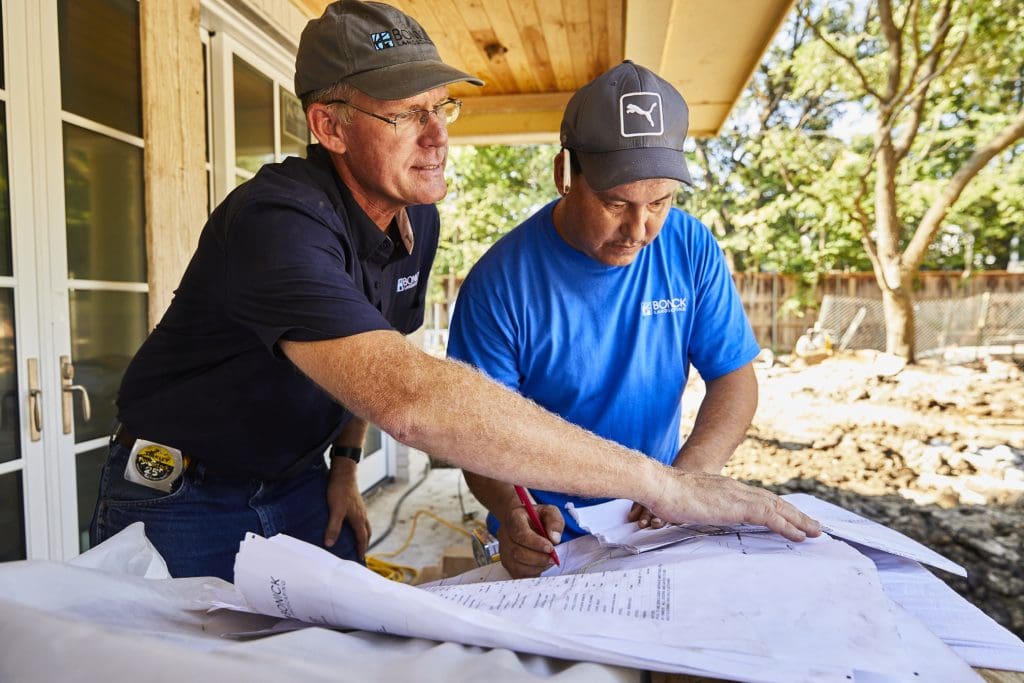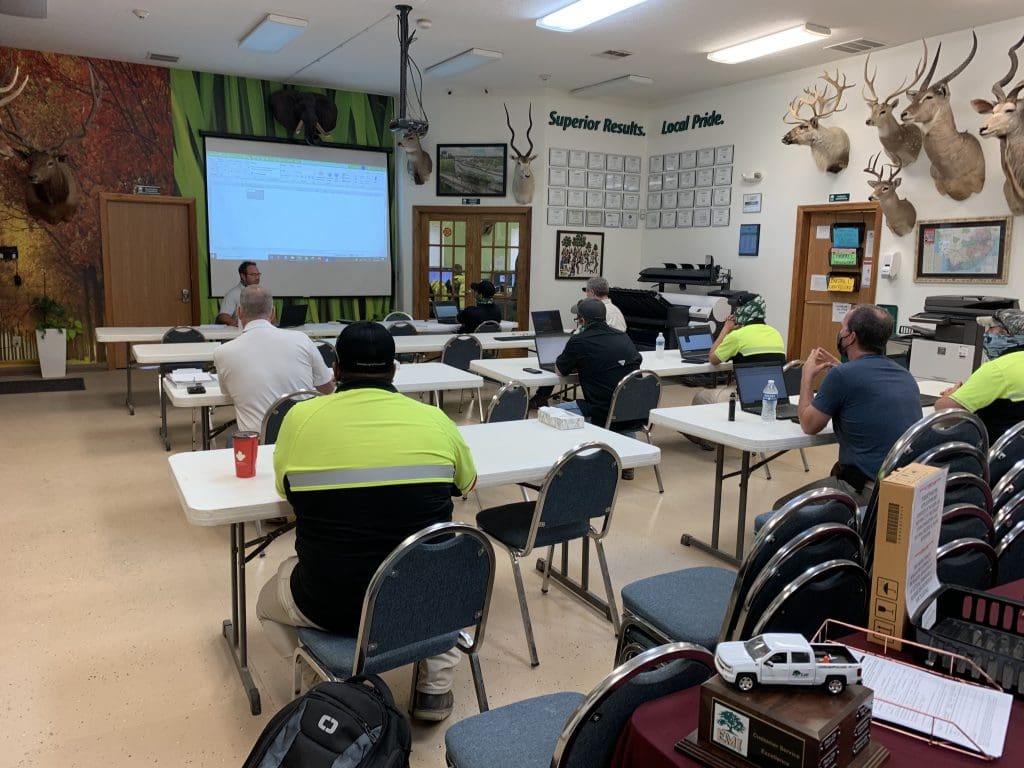
In the past year, since launching the Landscape Management Apprenticeship Program, 52 companies have enrolled and the first apprentices are beginning to graduate from the program. If you are thinking about participating in the Landscape Management Apprenticeship Program but aren’t quite clear on how to staff and manage the program, one aspect to consider is who from your team will take on the important roles of program manager and mentor.
What Does a Program Manager Do?
“The program manager handles everything until the individual is approved for the apprenticeship program (i.e. sourcing/recruiting, relationship building, reviewing requirements, working with NALP on any paperwork),” says Angela Barr, administrative manager for Eichenlaub, based in Pittsburgh, Pennsylvania. “Then there’s the baton handoff to the mentor.”
Barr took on the program manager role for her company as it was a natural fit due to her handling many of the recruitment and sourcing activities. For Environmental Management, Inc. (EMI) based in Plain City, Ohio, the employee responsible for training and development is their program manager.

“Many of the same tactics used to find apprenticeship candidates are those used in sourcing full-time team members and interns,” Barr says.
The program manager position is suited for someone who is already well-versed in handling administrative paperwork and keeping others on track.
Environmental Enhancements, based in Sterling, Virginia, assigned the role of program manager to their office/HR manager who has been involved in the program from the beginning.
“The program manager is the primary contact with NALP and turns in forms and is a resource for the mentors,” says Joe Lewis, LIC, account manager for EMI. “The mentor is driving the bus and the program manager is making sure they’re driving in the right direction.”
What is a Mentor?

Photo: Bonick Landscaping
Mentors are responsible for the training that is conducted, which is why companies typically select those who are already in training roles to be their mentors. EMI selected mentors from members of management who were already Landscape Industry Certified technicians or managers.
“We wanted somebody that was in a management position or a position of influence,” Lewis says. “Somebody who has the vision of ‘Look this is new. There may be things that aren’t perfect or ironed out yet, but we need to adapt to make this work.’”
Carmen Kesteven, office manager for Environmental Enhancements, says they look for the most qualified mentor based on their experience, knowledge of the industry and training abilities.
“Our Staff Development Coordinator was the right person to handle mentorship,” Barr says. “She is an industry veteran who is well-versed in all things landscape. Her role at Eichenlaub is to provide, deliver, and manage training opportunities.”
Lewis explains that being a mentor isn’t a full-time job, but rather you check in on the apprentice and help them learn.
“People who look at it as more work, I think they’re looking at it all wrong,” Lewis says. “It’s not more work. The apprenticeship program is just adding to focus to the work we should already be doing.”
“The mentor handles the day-to-day relationship with the apprentice, being vigilant that the necessary tasks are being performed to complete the program,” Barr says. “After the apprenticeship is completed, it’s back to the program manager to wrap up paperwork and discuss next steps with employment and an individualized growth plan.”
Traits to Look for in Program Managers and Mentors
Kesteven says a program manager is knowledgeable of the apprenticeship program, consistent in keeping communication between the mentor and apprentice and consistent in tracking information.
“This person is like a talent scout,” Barr says. “(They) need to be personable, knowledgeable about the program/company/outlook of the green industry, strategic, outgoing and open to thinking outside the box.”
Another trait to look for include being a good time manager.
“It’s a year-long to 18-month-long process that you can’t have everything done all at once,” Lewis says. “But you also have to manage your time because you’re managing other people’s time, materials and resources.”
When it comes to what to look for in mentors, Lewis says that mentors need to believe in developing people and believe in the apprenticeship program.
“I think of this person as the coach,” Barr says. “(They should be) nurturing, organized, motivating, knowledgeable in the trade skills and able to give constructive feedback.”
Kesteven adds that mentors need to be patient, consistent and follow through.
Time Commitment
After getting the program under way, program managers only have to maintain it and check in on the mentors to make sure everything is going smoothly.

“I would say it takes 10 percent of your time, probably less, probably five percent,” Lewis says. “I mean it’s really not even an hour a week for a program manager.”
Kesteven says currently their program manager spends 2 to 3 hours per month working on the program, depending on how much the apprentice has completed.
“The biggest items of time consumption are sourcing and building relationships with secondary schools,” Barr says. “These are ongoing and continuing activities with more focus in the fall and late winter/early spring months.”
When it comes to the amount of time mentors can expect to spend on the apprenticeship program, Lewis says it’s the same amount any manager spends training their people. Mentors at EMI meet with their apprentices bi-weekly to discuss where they are, how they’re trending and what upcoming core competencies they plan to cover.
“With consistent weekly training the mentor needs about an hour per week to complete training topics and paperwork for documentation of the hours,” Kesteven says.
Barr says their mentor spends 1/5 to ¼ of her week on the apprenticeship program.
“Don’t look at as a monumental task or that you have to do 2,000 hours in 3 months,” Lewis says. “Look at it as you’re already training your people. Now you’re just documenting how you’re training them in these core competencies.”
Interested in enrolling your company in the Landscape Management Apprenticeship Program? Click here to learn more.
This article was published in the Sept/Oct issue of the magazine.

